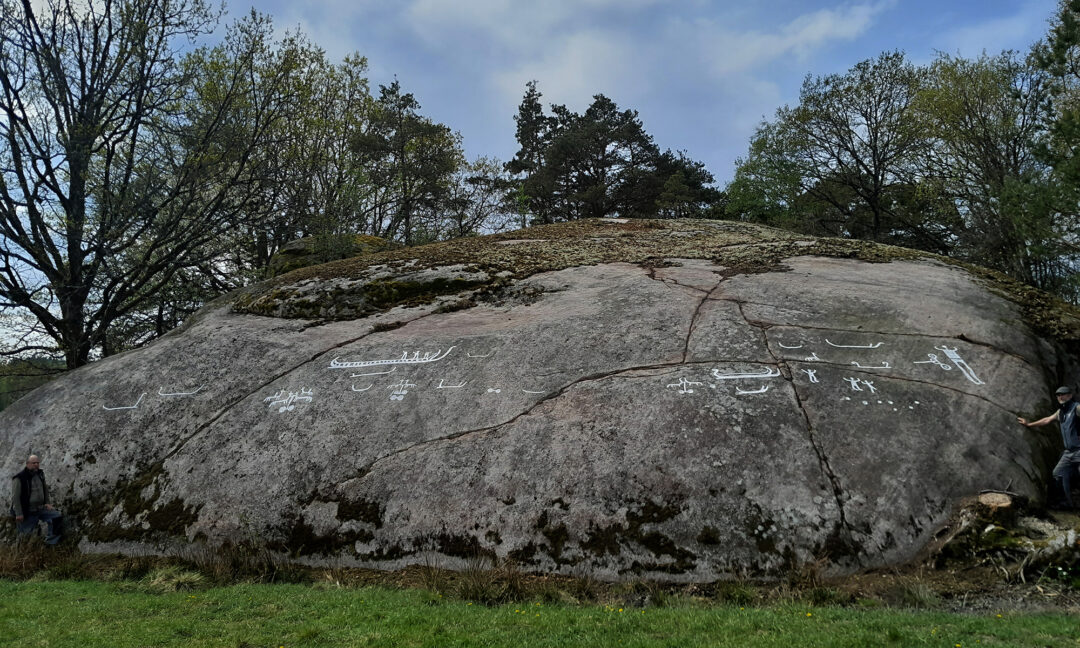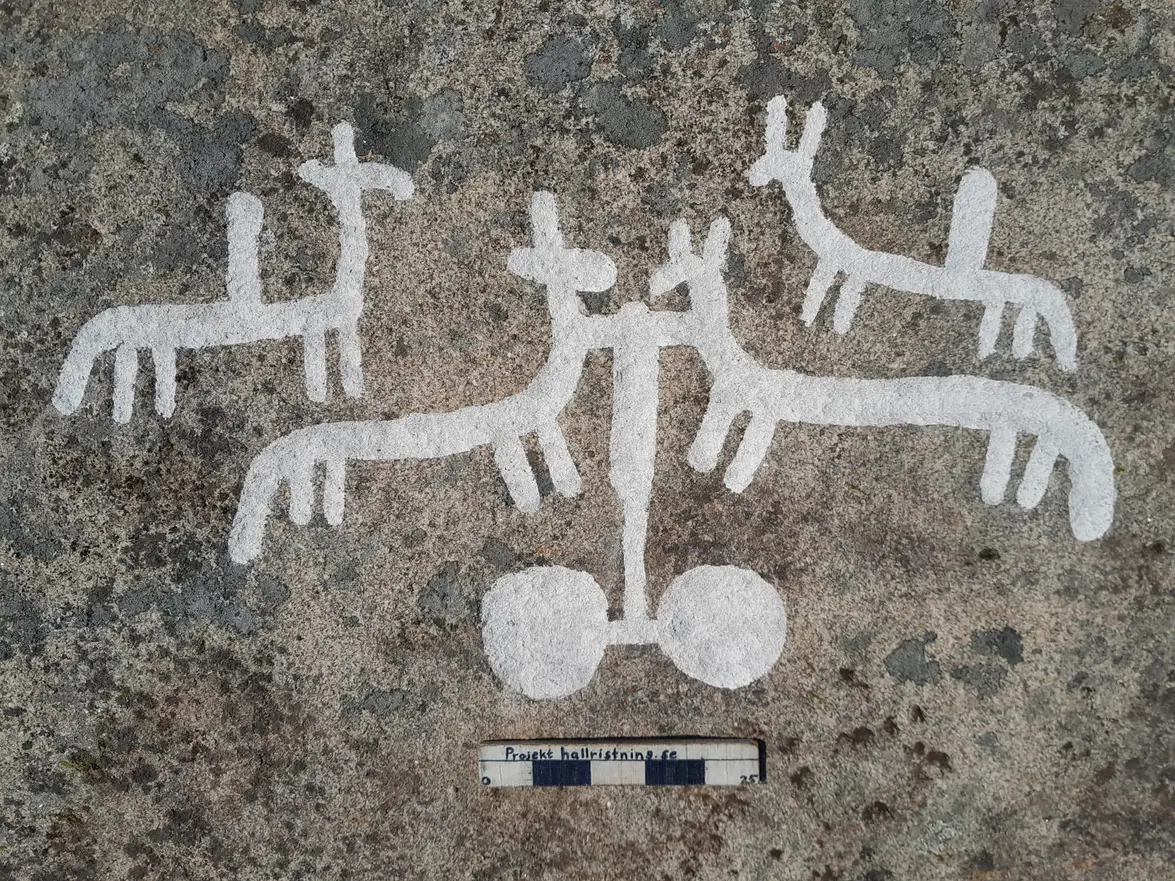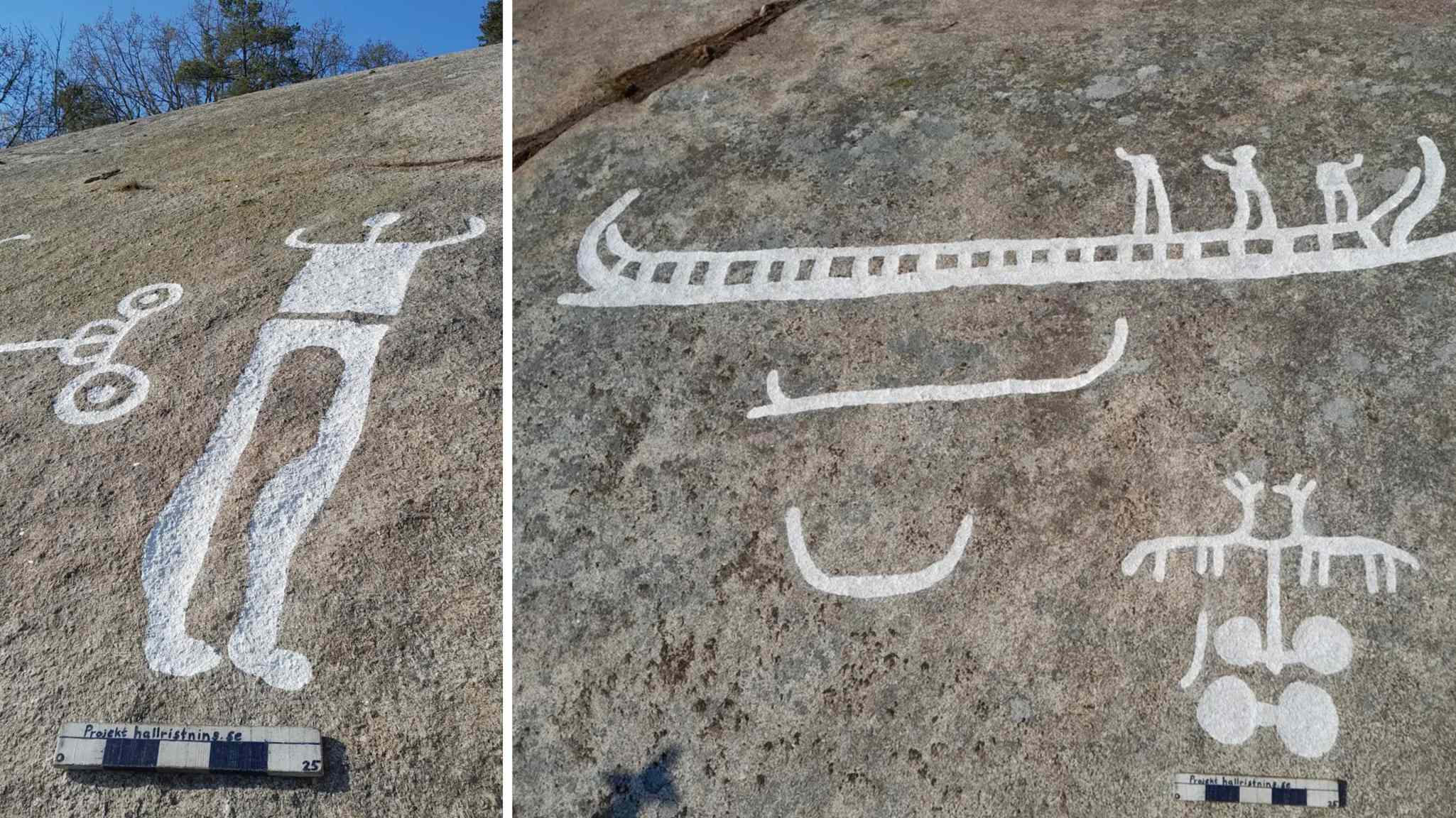Researchers from the Foundation for Documentation of Bohuslan’s Rock Carvings made a remarkable find in the Swedish province of Bohuslan: a large petroglyph carving.

Rock art can be created by carving, scraping, or abrading away part of a stone surface to form a petroglyph.
It was once thought that the carving of petroglyphs was an indication of religious practices, however, more current research has suggested that these images can be used not only to demonstrate cultic rituals, but also to document cultural history and social structure.
While the archaeologists were examining a rock slab in a farm field, they caught sight of a fragment of a vessel below the layers of moss.

After the moss was cleared, the researchers found a petroglyph that was 15 metres in length and had 40 figures etched on it. The petroglyph featured ships, horses, people, and chariots, with a total of thirteen ships, nine horses, seven people, and four chariots being identified.
Archaeologist Andreas Toreld comments that on an almost vertical outcrop, there are two large figures with deep carvings. He further observes that although the motifs are not extraordinary, the place of their positioning is. The two figures are a two-metre ship and an individual over one metre tall.
The petroglyph, which was created during the Nordic Bronze Age’s height of stone engraving, has been estimated to have been made between 700 and 800 BC.

The province of Bohuslan is widely known for its abundance of petroglyphs, which depict many aspects of life, such as people, agriculture, hunting and fishing, cults, religion (e.g. the Sun cross), carts, ships, and weapons.
The linear arrangement of the figures led the researchers to hypothesize that they were created by craftsmen while they were stationary on a boat. At the time, the rock formation was an islet, with the petroglyph etched just above the waterline covered in a dark layer of cyanobacteria.



